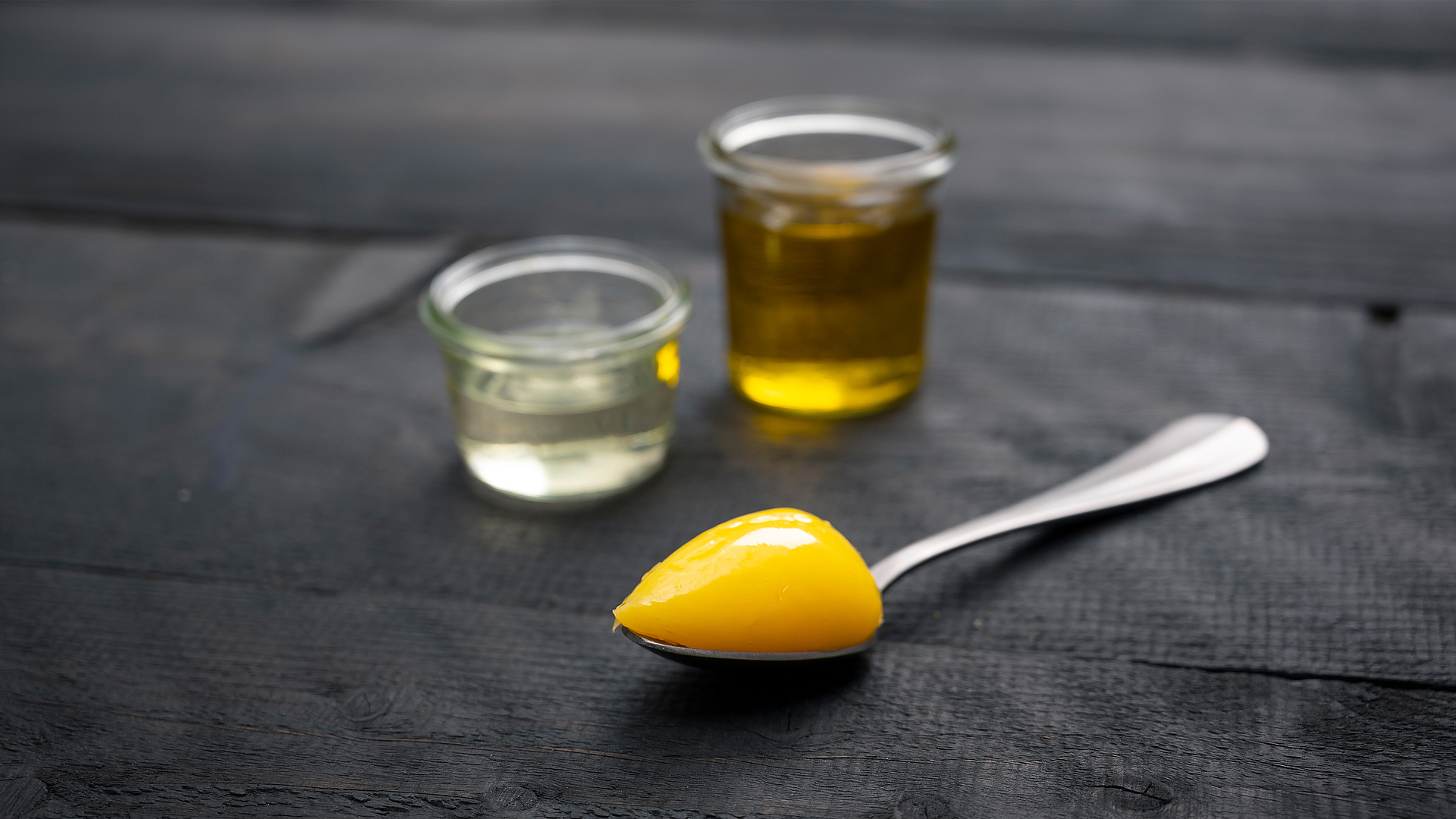
Which oils are suitable for frying?
Not all oils work equally well for frying. This blog post explains what this depends on, which oils can be used for what and why certain oils or fats are healthier than others. Check out the impressive range of tasty oils and their many different uses.
Why the smoke point matters
Oils and fats play a major role when frying in general and on the Tepan stainless steel grill in particular: they add flavour to dishes, bring about good results and contain healthy nutrients. But not all oils or fats are equally suitable for use at hot temperatures.
The decisive factor in this regard is known as the ‘smoke point’. This is the moment from which clearly visible smoke develops when heating oil or fat. As soon as streaks form in fat, it is hot and you should put the food on the Tepan. If the fat begins to smoke, harmful and unpleasant-tasting substances form and it should no longer be consumed.
Fats and oils have different smoke points: whereas refined oils and fats usually have a high smoke point of over 200°C, the smoke point of natural oils tends to be far lower. Oils and fats with a low smoke point should not be heated at all and are better for uncooked food, salads or gentle confiting or steaming.
Fatty acids – saturated or unsaturated
The composition of the oil is an important factor with regard to health: oils with a high polyunsaturated fatty acid content are great for the health, but often cannot be heated to particularly high temperatures. They are liquid at room temperature and mainly take the form of plant-based oils such as hazelnut, avocado or sesame oil.
Saturated fats, on the other hand, are bad for the blood lipid levels. They can increase the blood cholesterol, leading to heart conditions, diabetes or strokes. You should therefore avoid animal fats entirely or enjoy them in moderation – especially when combined with sugar. Such fats are primarily found in convenience food.
We recommend preparing food yourself to regulate the fat content. Oil doesn’t always have to be used when frying. For example, if you have a non-stick frying pan, you can omit the oil. Alternatively, try steaming your vegetables by adding a splash of water to the pan with them.
Not all oils are the same
We recommend the following oils for cooking. These have very different flavours and can therefore be used for a variety of dishes:
Light sesame oil (virgin) 190–230°C: sesame is the oldest oil plant in human history. The light oil is made from unroasted grains and can be used for shallow frying, baking and deep frying.
Olive oil (virgin) 170–190°C: extra virgin olive oil is suitable for frying fish, meat and seafood as well as for marinades. Caution: valuable constituents burn at higher temperatures. Specific olive oil for frying therefore exists.
Ghee 170–230°C: ghee is a simple butter substitute most commonly found in Indian and Ayurvedic cuisine. It is used for frying, baking and roasting spices.
Coconut oil 170–210°C: coconut oil is a solid vegetable fat that is great for desserts due to its delicate inherent taste.
Groundnut oil (virgin) 190–230°C: extra virgin groundnut oil has a distinctive flavour, comes packed with vitamins and is high in unsaturated fatty acids. It is commonly used for Asian and American cuisine, for example.
As you can see, you don’t always have to turn to the classic options of rapeseed or sunflower oil. Please note that high-quality oils are heat and light sensitive. Cold-pressed oils such as linseed, walnut or pumpkin seed oil are therefore best stored in a refrigerator.